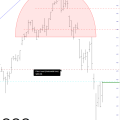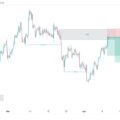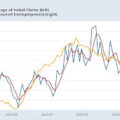On Wednesday, investors will digest one of the most important data points that will shape future Federal Reserve interest rate policy: August’s Consumer Price Index (CPI).
The report, set for release at 8:30 a.m. ET, is expected to show headline inflation of 2.5%, a deceleration from July’s 2.9% annual gain in prices. Over the prior month, consumer prices are expected to have risen 0.2%, matching July’s monthly increase.
On a “core” basis, which strips out the more volatile costs of food and gas, prices in August are expected to have risen 3.2% over last year, unchanged from July’s increase. Economists also expect monthly core price increases to remain unchanged, estimating an uptick of 0.2%, according to Bloomberg data.
Inflation, although moderating, has remained above the Federal Reserve’s 2% target on an annual basis. But recent economic data, including a weakening labor market, points to an all-but-certain rate cut by the end of the Fed’s next policy meeting on Sept. 18.
“The time has come for policy to adjust,” Fed Chair Jerome Powell said at the Kansas City Fed’s annual economic symposium in Jackson Hole, Wyo., last month.
The question now is just how much policy adjusting the Fed will do when it comes to slashing rates. Wednesday’s inflation update could help clarify that decision.
“We expect the August CPI report to continue the good news on inflation,” Bank of America economists Stephen Juneau and Jeseo Park wrote in a preview ahead of the report. “The data should strengthen the case for a September cut.”
Read more: Fed predictions for 2024: What experts say about the possibility of a rate cut
Core inflation has remained stubbornly elevated due to higher costs for shelter and core services like insurance and medical care. Bank of America expects those trends to remain largely the same.
“We continue to expect a divergence between core goods and services prices,” the economists said. “This is due in large part to sticky rent inflation, which surprised to the upside last month. Over the medium term, rent inflation should normalize to pre-pandemic levels given supply growth and asking rent data, but monthly data may remain choppy.”
Read more: What is inflation, and how does it affect you?
Goldman Sachs’ team, led by economist Jan Hatzius, anticipates a moderation in shelter inflation for the month of August.
“Going forward, we expect monthly core CPI inflation around 0.2% for the rest of the year,” Goldman said. “We see further disinflation in the pipeline in 2024 from rebalancing in the auto, housing rental, and labor markets, though we expect offsets from catch-up inflation in healthcare and car insurance.”
“We forecast year-over-year core CPI inflation of 2.9% and core PCE inflation of 2.6% in December 2024.”
25 or 50 basis points?
The 25 or 50 basis point rate cut debate has gained steam in recent months as inflation has continued to moderate.
“Another benign CPI report could give enough FOMC members further ‘confidence’ that inflation is moving back to 2% on a sustainable basis for them to back a 50 bps rate cut,” Wells Fargo’s economics team, led by Jay Bryson, wrote in a note to clients on Friday. “If, on the other hand, the inflation data are hotter than expected, then the consensus likely will coalesce around a 25 bps reduction on Sept. 18.”
As of Tuesday, markets were pricing in a nearly 100% chance the Federal Reserve cuts interest rates by the end of its September meeting. However, the odds of a 50 basis point cut versus a 25 basis point cut were split 70/30 after a roughly 60/40 chance placed by traders last week, per the CME FedWatch Tool.
But the Fed’s decision won’t all come down to inflation, as the US economy added fewer jobs than expected in August.
“Beyond the first cut, we think that activity and labor market data will be a more important determinant of the pace and depth of the cutting cycle than inflation,” Bank of America’s Juneau and Park said. “In other words, the Fed’s reaction function is starting to put more emphasis on its other mandate — maximum employment.”
Alexandra Canal is a Senior Reporter at Yahoo Finance. Follow her on X @allie_canal, LinkedIn, and email her at alexandra.canal@yahoofinance.com.
Click here for the latest stock market news and in-depth analysis, including events that move stocks
Read the latest financial and business news from Yahoo Finance




